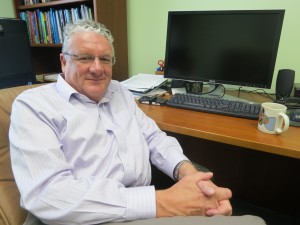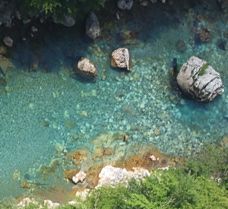Lack of Floodplain Maps Could Leave Rural Texas Unprepared for Next Big Storm
Floods have devastated parts of Colorado and both the Gulf and Pacific Coasts of Mexico in the last week. While Texas had some rainfall during that time, it’s been years since the state has seen weather comparable to those disasters.
But that doesn’t mean that extreme stormy weather is gone for good.
“We know it’s coming, we just don’t know when,” Roy Sedwick, the Executive Director of the Texas Floodplain Management Association, told StateImpact Texas.
That’s the reason for mapping floodplains, so that when the rains do come, people will be ready.
“Think of a floodplain as a railroad track,” explained Sedwick. “Just like the track is put down to carry the train, a floodplain is put down by mother nature to carry the flood waters.”
“The only difference is we know the schedule of the train, we don’t know the schedule of the flood,” he added.
But in Texas, we don’t know where a lot of those floodplains are. Over half of the counties in the state don’t have maps at all, according to David Maidment, a hydrologist at UT’s Center for Research in Water Resources.
Maidment advised the Federal Emergency Management Agency (FEMA) on a project to update floodplain maps nationwide. He says the project ran short of money, forcing the feds to pick and choose where to map.
“It’s been done in all the populated areas where most of the people live,” he told StateImpact Texas in an interview earlier this summer. “But there’s about six percent of the population, [they] live in half the counties in Texas, that have no floodplain mapping even now.”
‘I think that’s an issue of economic justice,” said Maidment. “Why should people who live in rural areas have no floodplain maps just because they live in rural areas?”
The Floodplain Management Association’s Roy Sedwick says since FEMA has backed away from mapping rural areas, the state should partner with counties and local governments to get the job done.
Of course, that would take money.
Maidment is not hopeful that those funds will be forthcoming. He thinks that property owners could even try to pool their funds themselves, to finance mapping. As long as those maps don’t exist, he says, there will be a blind spot in flood planning in many rural parts of the state.


